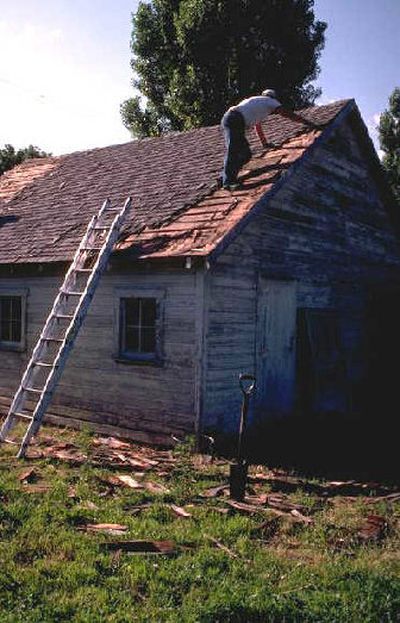Know all about ladders? Think again

It’s that time of year when everyone starts thinking about getting the house and yard ready for cooler weather and the upcoming holiday season. Whether it’s installing storm windows, cleaning gutters, putting up holiday decorations or trimming the tree, one of the first tools that homeowners reach for is a ladder.
Using a ladder seems simple enough, yet each year more than 500,000 people are treated in hospital emergency rooms, doctors’ offices and other medical settings because of injuries related to ladder use. Most injuries are cuts, bruises and broken bones. However, more than 300 people a year die from ladder injuries, the Consumer Product Safety Commission reports.
Knowing the right way to set up and use a ladder can reduce the chance of a fall or other accident. Here are some tips developed by the American Academy of Orthopaedic Surgeons.
•Properly set up the ladder. Every ladder should be placed on a firm, level, slip-free surface. If you’re working outside, make sure the ladder will not hit electrical wires, tree limbs or other obstructions when it is extended.
•Remember the 1-to-4 rule: The bottom of the ladder should be 1 foot away from the wall for every 4 feet that the ladder rises. For example, if the ladder touches the wall 16 feet above the ground, the feet of the ladder should be 4 feet from the wall. If you are going to climb onto a roof, the ladder should extend at least 3 feet higher than the roof.
•Don’t use a ladder as a seat. You might want to take a break between chores, but never use a stepladder’s top or pail shelf as a seat.
• Pick the right ladder for the job. If you’re washing windows inside the home, choose a step stool or utility ladder — they’re often used when working at low or medium heights. Extension ladders are ideal for use outdoors to reach high places, like gutters on the roof of a house.
•Move materials with caution when on the ladder. If you’re cleaning out the garage or closet, be careful pushing or pulling anything from shelves while standing on a ladder. You could lose your balance and fall off.
•Reposition the ladder closer to the work. Over-reaching or leaning far to one side when you’re on the ladder could make you lose your balance and fall. Your bellybutton should never go beyond the sides of the ladder!
•Wear the right footwear. Make sure your shoelaces are tied and the soles of your shoes are free of grease, oil or wet substances. Don’t wear leather-soled shoes — they’re slippery! Pant legs shouldn’t be too wide or too long.
•Be careful when climbing, and get help if you need it. Ask someone to hold the ladder while you climb. Stay in the center of the ladder as you climb, and always hold the side rails with both hands.
Finally, before you put a ladder away for the winter, clean off any mud or other liquids that might have accumulated and check for any loose screws, hinges or rungs.